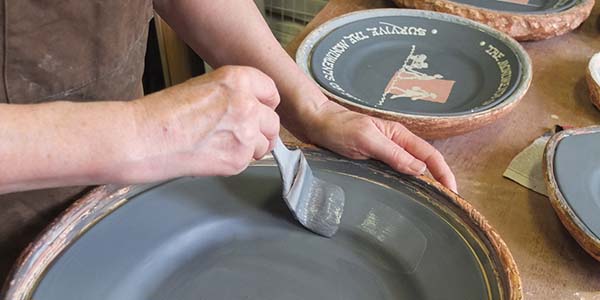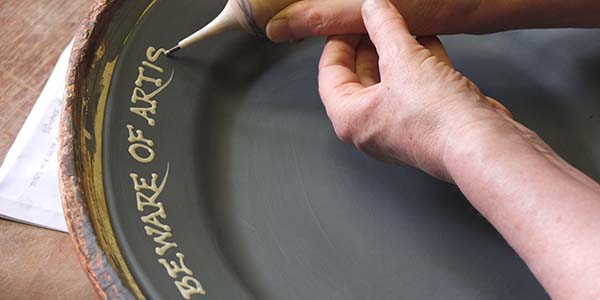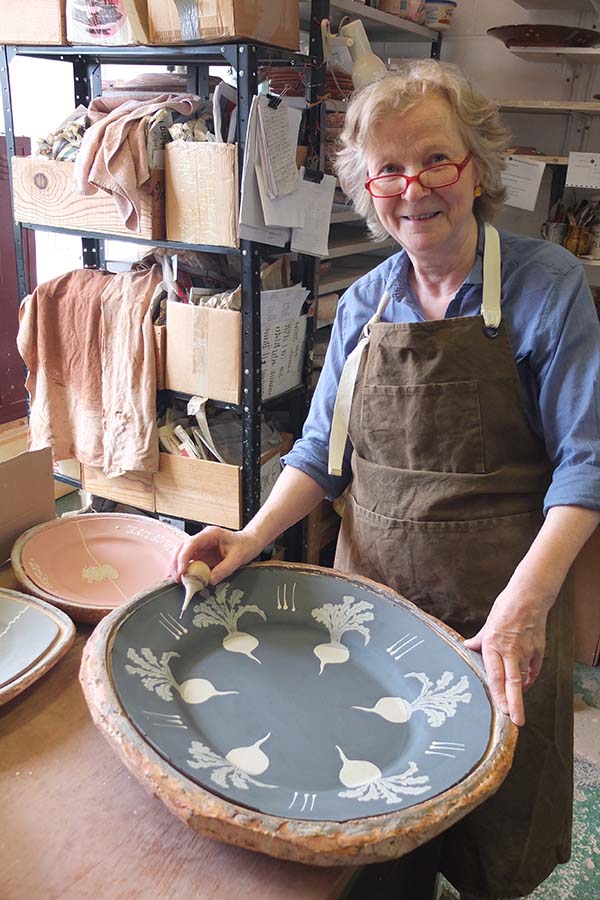All the dishes in this exhibition are made in moulds, not thrown on a wheel; I like the softness of the result, and making my own plaster moulds means I can make a variety of different shapes with relative ease. The clay is rolled out on a sort of mangle, and the slab dropped into the mould; just like making a jam tart.
I use earthenware clay, and decorate with slip – that is clay which is sloppy enough to brush, or trail from a rubber bulb. Earthenware clay is very straightforward. The base colour is brushed on, the inscriptions are trailed (quite fast), and the images are transferred from drawings cut out of newspaper. Slip is brushed onto the cut-outs, the internal lines are drawn with a porcupine quill, and the cut-out transferred to the damp clay of the dish. Images of Landmark buildings for this exhibition have to be carefully sequenced, with a separate layer for each colour. After a first “biscuit” firing, the dishes are glazed and fired again.

The clay is rolled out on a “slab-roller”, which is like a mangle. The slab is dropped into a plaster mould, trimmed, and brushed with slip – slip is clay that is liquid, the consistency of cream. It can be poured, but I prefer brushing .

The lettering is done next, using a rubber bulb made for administering enemas to babies – just the thing. I write freehand, after thinking a bit about spacing.
